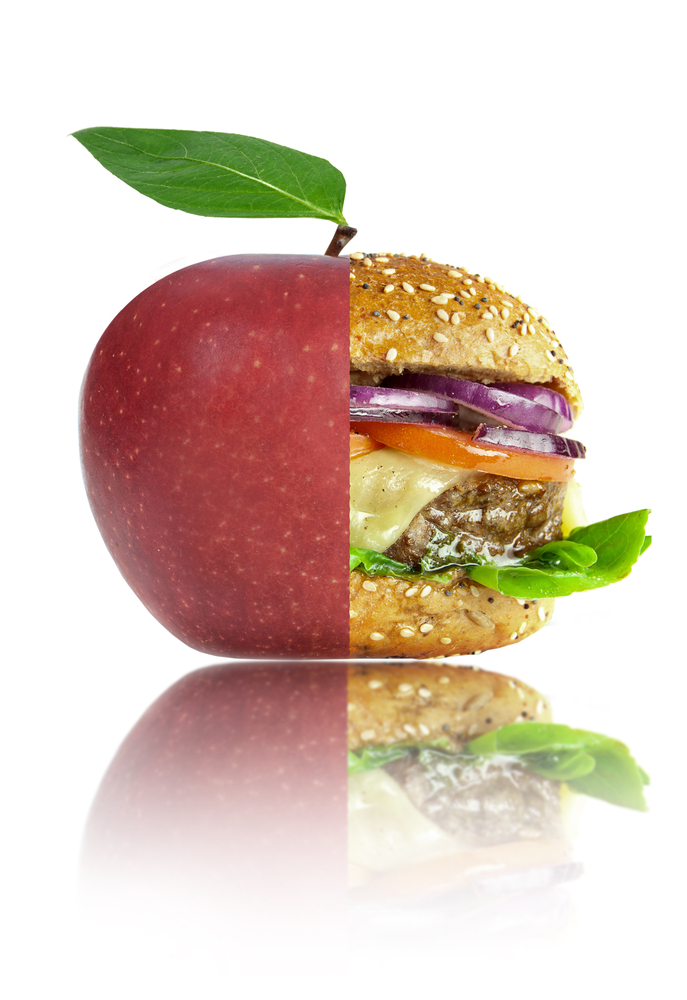Clean Bulking Vs Dirty Bulking
If you've ever searched online or spoken to a gym-goer about bulking and building muscle you've without a doubt heard the terms 'clean bulking' and 'dirty bulking' quite a few times!
As always, there's a big divide... with a large portion of gym-rats swearing by the slow and steady clean bulking method while the others opt to go dirty and smash down copious meals, regardless of the quality of nutrients in order to stack on weight.
"Clean bulking is the best! you get to stay shredded" - Gym Goer 1
"No, dirty bulking is better for building mass quick!" - Gym Goer 2
Let's take a proper look at what each of these methods of bulking entails as well as the pros and cons so you can decide where you stand.
Hard Truth #1 - A Caloric Surplus Is Vital For Building Muscle Mass
You can manipulate the exercises you're performing, the number of reps, sets, tempo, rest between sets and any other variable you wish in regards to your training.
But you'll be left disappointed if building muscle mass is your goal and you neglect your diet.
Your body MUST be in a caloric surplus to build muscle mass aka. bulk.
There's a ton of specific diets out there such as the steak and eggs diet, the warrior diet, the ketogenic diet, the GOMAD diet etc.
The success of these individuals diets comes down to the caloric surplus (extra calories) or caloric deficit (fewer calories than our body requires) it places us in.
The steak and eggs diet is a low carb diet aimed at fat loss, but if you're eating too much steak and too many eggs, resulting in a caloric surplus then you'll be GAINING weight on the steak and eggs diet.
This is slightly edging off track on the clean bulking vs dirty bulking debate, but it's important to understand that any specific meal plan or dieting style can be used to bulk or cut based on the number of calories you're consuming in relation to how many calories your body requires each day to maintain its current condition.
What Is Clean Bulking?
A 'clean bulk' or a lean bulk is a style of bulking focused on consuming a slight caloric surplus (no greater than 500 calories above your TDEE) in order to build muscle at a slower, more sustainable rate without packing on too much excess body fat. A clean bulking diet is comprised of nutrient dense foods.
The 'eat 5 - 6 small meals a day consisting of protein and carbohydrates in the form of foods such as chicken, tuna, brown rice, broccolli and sweet potato' approach to bulking is the typical clean bulking regime.
Pros of Clean Bulking:
- You'll gain less fat as your caloric surplus isn't as aggressive
- You'll feel better as your diet isn't loaded with processed foods (provided you follow the traditional clean bulking style of diet)
- Your caloric intake and macronutrient breakdown are more calculated and concise
Cons of Clean Bulking:
- It's strict - you're going to have to fight off the cravings and urges to binge
- Gaining strength and size is a slower process when you're in a relatively small caloric surplus
- You'll likely need to prep the majority of your meals in order to hit your daily nutrient and calorie goals
What Is Dirty Bulking?
The dirty bulking approach to gaining weight and building muscle mass is far less calculated than the clean bulking alternative.
A dirty bulking diet aims to put your body in a caloric surplus upward of 500 calories (generally anywhere from 800 - 2,000 calories above your TDEE).
As it's relatively difficult to consume such a large number of calories from 'clean' (unprocessed) food sources the dirty bulk is all about eating everything and anything in order to obtain that elusive calorie surplus to gain muscle mass and weight.
For example, the GOMAD diet is a form of dirty bulking diet.
Pros of Dirty Bulking:
- You'll be eating foods you enjoy in quantity!
- Less structure - no need to eat the same foods and portions day in day out
- Dirty bulking isn't a constant battle of discipline as you're not restricted like your clean bulking alternative
- Strength gains are substantially quicker when you're in a sizeable caloric surplus
Cons of Dirty Bulking:
- You'll likely feel sluggish and low on energy due to the sheer amount of food your body is digesting
- You're not doing your health any favors if you base your calories and carbohydrates around high fat and sugary carbohydrate based meals
- When it comes time to transition from a bulking phase to a cutting phase you're going to have to put in more work to strip the excess fat you gained from such a surplus
Should YOU Clean Bulk Or Dirty Bulk (My Conclusion)
Having experimented with both clean bulking phases and dirty bulking phases over the last 6 years I can honestly say both methods work, therefore it comes down to the individual.
If your priority is strength and overall size and you're not so concerned about an increase in your body fat levels and your overall energy levels while in the bulking phase then perhaps the dirty bulk is for you. I would not however recommend dirty bulking if you're an endomorph or your body fat is already north of 20% .
If you're more health conscious and want to not only look and feel good while requiring less time to cut down after your bulking phase then I recommend filling your diet with nutrient dense foods and creating a small caloric surplus clean bulking diet. If you're an endomorph or have 15%~ body fat then this is the route I'd recommend taking to stack on additional muscle and size.

